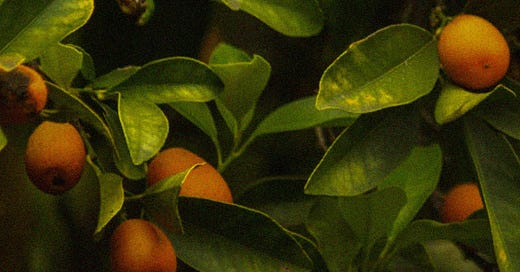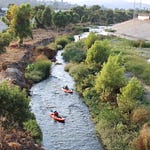Food Rescue in LA
Hey Climate Fam! 🌍 Let’s talk about food rescue in Los Angeles. There are some amazing initiatives going on to make sure food doesn’t go to waste.
So before we get started, let me ask you something. Have you ever stopped to think about how much food we waste every day in the U.S.? 🍕🍔🥗 Like, if I asked you what % of all food in the US goes to waste, what number would you guess? Ready for the answer? Buckle up, cause this is mind-blowingly bad. 🤯
In the U.S., 40% of all food ends up in landfills. 🍞🥦🍊 Meanwhile, 1 in 6 Americans doesn’t have enough to eat. But what about LA? Get this: LA throws away around 4,000 tons of food every day from homes, restaurants, grocery stores, and schools, while 1 in 4 people, aka 2 MILLION PEOPLE!, in LA County face food insecurity.
Seriously, how insane is this situation? Think about that for a second. On one hand, you have so much perfectly good food being thrown away, and on the other hand, you have millions of people going hungry. 🤦♀️
But the shock doesn’t end there. When food gets tossed into landfills, it rots, releasing a greenhouse gas called methane, which traps 84 times more heat than carbon dioxide. 🌡️ And in California, food waste in landfills contributes about 15- 20% of California's methane emissions.
Talk about a triple whammy — we’re wasting all that food and literally cooking our planet in the process, while so many people go hungry. Alright, so now that we understand this big problem, let’s talk about the solutions.
Food Rescue to the Rescue
We’ve got some bad-ass food rescue warriors out there working hard to make sure food doesn’t go to waste. 💪✨ Instead of food getting dumped into landfills, they are redirecting surplus food from grocery stores, restaurants, and farmers markets to communities in need.
FoodCycle LA: Rescuing Food, One Meal at a Time 🚚🍽️
Let’s start with FoodCycle LA, one of our key partners in this fight against food waste. It all started in the early 2000s with a few volunteers from a yoga studio noticing how much fresh food was being tossed out by local restaurants and grocery stores. They decided enough is enough. Fast forward to today, and FoodCycle LA now operates an impressive system connecting food donors to food pantries to distribute food before it spoils to those who need it.
And here’s the kicker—they do it all with the help of full-time and volunteer drivers and some pretty cool tech. 🧑💻 Their Careit app (spelled c-a-r-e-i-t), connects their volunteers in real-time to local businesses that want to donate their surplus food.
The volunteer then picks up the food and delivers it to where it’s being requested in the app. For extra points, their in-house, full-time drivers make their deliveries in electric vans 🚐🔋), effectively cutting down on carbon emissions while they’re out there saving food (and the Earth)! 🌍💪
In 2022 alone, FoodCycle LA recovered and delivered a whopping 4.5 million pounds of edible food throughout LA County. 😎As they like to say, feed people, not landfills. 🌱 Sounds simple, yet so game-changing. 🚚🍽️
Food Forward: Harvesting a Better Tomorrow 🍊🍓🌿
Next up is another powerhouse in the LA food rescue world—Food Forward. These folks are experts at recovering surplus produce, often referred to as “gleaning”, from wholesale distributors, farmers' markets, and even residential backyards!
Since 2009, Food Forward has been rescuing fresh, nutritious fruits and veggies for communities in need. 🌽🍎🍇 The impact of Food Forward’s work can’t be overstated. With over 250 hunger relief partners, they’ve saved over 448 million pounds of fresh produce over their 15 years in operation! 😲
LA’s Composting Revolution: The Law of the Land
Now, food scraps are inevitable, but they don’t need to go to landfills—they can be used to grow more food. Nonprofits like LA Compost help people recycle their food scraps, which can then be transformed into compost that enriches the soil at local gardens and urban farms. It’s nice and circular ♻️: From food to soil and back again! LA Compost’s work is part of the broader push in California to reduce organic waste.
Because it’s not just nonprofits making moves. California lawmakers are finally waking up to this crazy problem. In 2016, California passed SB 1383, a groundbreaking law aimed at reducing 75% of all food waste by 2025. This law went into effect in 2022, and it requires all food-related businesses to donate at least 20% of their surplus food to food pantries. The law also mandates that cities create systems to divert food waste from landfills. 🙌
Now, it hasn’t been a smooth ride. Lots of cities have struggled to roll out composting and donation programs, and while there are fines for non-compliance, enforcement has been pretty much absent. Still, progress is happening: 79% of municipalities across California say they have some kind of residential program in place for recycling food waste. Plus, just last year, 217,000 tons of food was rescued. 🌍
Grocery Stores: The Next Frontier
But California hasn’t stopped there in its mission to make rescuing food the law. You know the “sell by” and “best before” dates that make you throw out food when it’s still perfectly fine to eat? 🗓️They’re actually a huge source of food waste. In the US, an estimated 7-10% of all food is wasted because people don’t understand the dates on food labels, mistaking them for expiration dates.
So, at the end of September 2024, Governor Newsom signed a bill called AB 660, which mandates that starting in 2026, food labels will be standardized to make it easier for consumers to know when their food is still safe to eat. No more tossing good food because of some confusing label. 🍞 🛒
Another reason why so much waste comes from grocery stores is that they often overstock just to avoid missing sales. 🛒 To prevent this, some stores are now using machine learning to better predict demand. They aim to utilize dynamic pricing where items are automatically discounted as they get closer to their expiration date, moving them off the shelves faster. 💸
An initiative called the “Pacific Coast Food Waste Commitment” is backing these efforts, aiming to reduce 50% of food waste by 2030. Thanks to this initiative, big names like Walmart have already seen a 28% drop in unsold food waste. 🌿💡
Food Rescue and Climate Action
Food rescue isn’t just about feeding people (even though that’s very important)—it’s also a powerful climate solution. 🌎 Not only does rotting food emit planet-warming methane, food that goes to waste means the water, land, and energy used to produce it are also wasted. That means that every apple or carrot rescued represents resources saved and greenhouse gas emissions avoided. 🥕💧
Now, nonprofits like FoodCycle LA and Food Forward are out there fighting this fight every day, recovering food and distributing it to those in need. But they rely entirely on donations to keep going. And while that’s inspiring, it also raises a big question: Why isn’t there more government support? Given the millions we lose in retail value, food rescue projects ought to be scaled with public funding.
Think about it. Not only does rescuing food protect our environment and feed people, it also saves money! 🌱And that’s without factoring in the avoided cost of damages from steamy hot rotting food warming our planet with its methane nastiness.
So with that said, are you ready to support these efforts? You can get involved by backing food rescue organizations such as our local partners and making your voice heard by our elected officials. For more ways to take action, sign up for Hey Climate’s weekly climate events list at heyclimate.co.
Together, we can fight climate change, and transform LA into a model for sustainable living. 🌍💪✨ As FoodCycle says, Let’s feed people, and not landfills”. 🗣️✊








Share this post